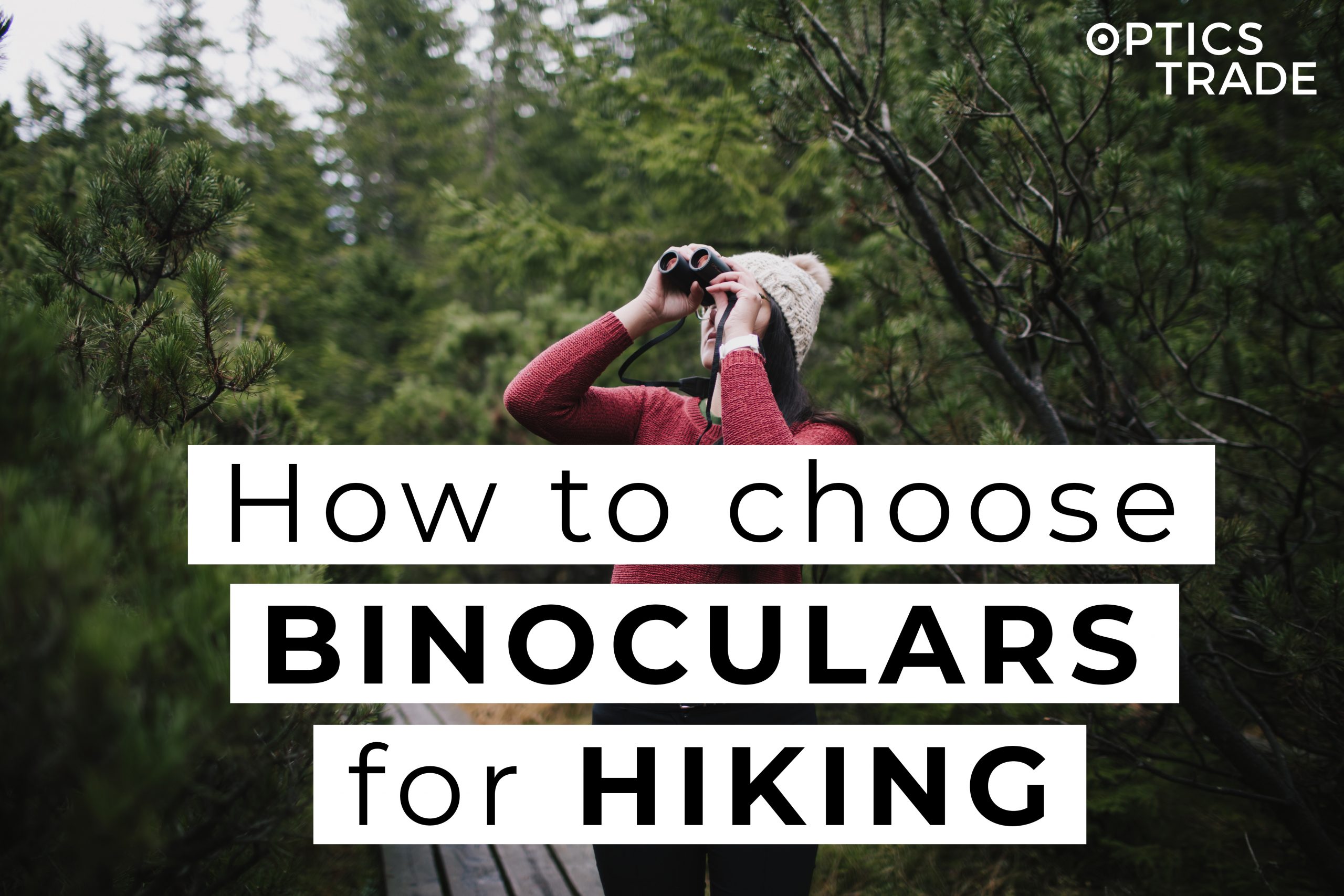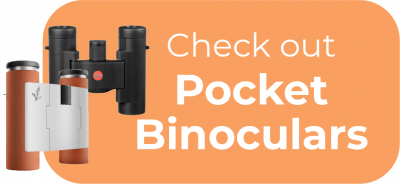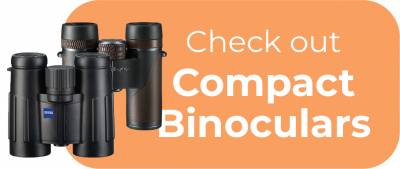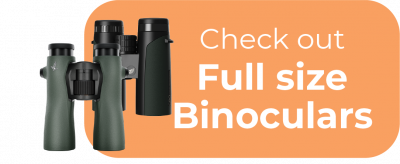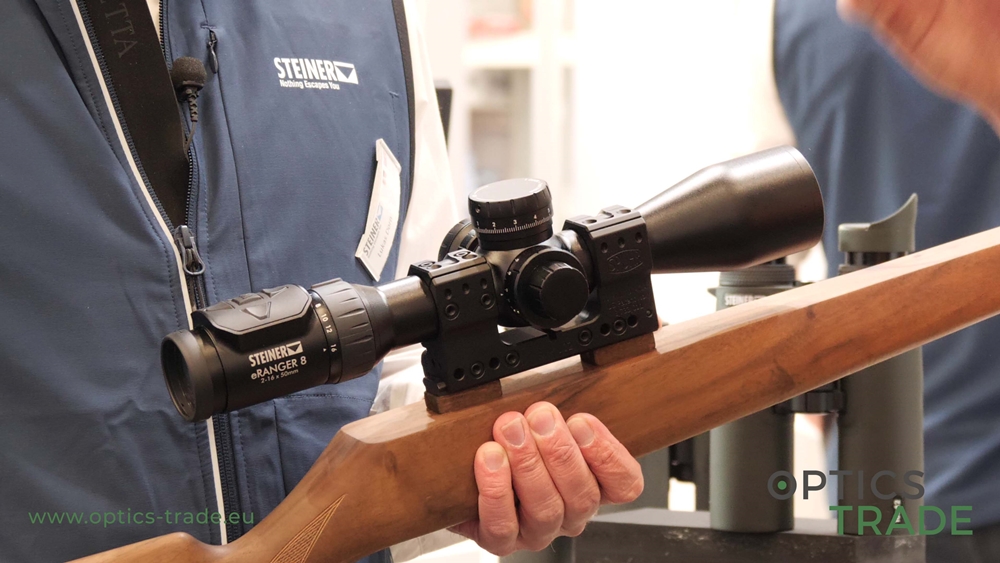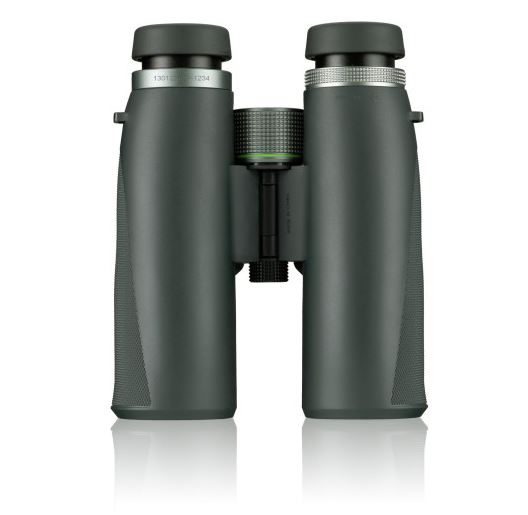Hiking includes a number of activities in which hiking binoculars can be useful. Most of the population plans their hiking trips to hills and mountainous areas while others like to explore green fields in the countryside. In either of the choices, there are a number of things to do with binoculars, like bird watching, wildlife exploration, general sightseeing and observing distant city infrastructure from the top of hills and plateaus.
Whether you are on a hiking and camping excursion with close family members or just backpacking with friends and colleagues, everyone generally likes to have their own set of hiking binoculars to maximize the enjoyment factor without having to share their gadgets and miss important sightings in the process. Most binoculars, especially for hiking, come with a neck strap or harness which can be used to carry the binoculars around the neck while they are not in use. This way, the devices are highly accessible so if you come across something you do not want to miss, you can instantly point your binoculars in its direction.
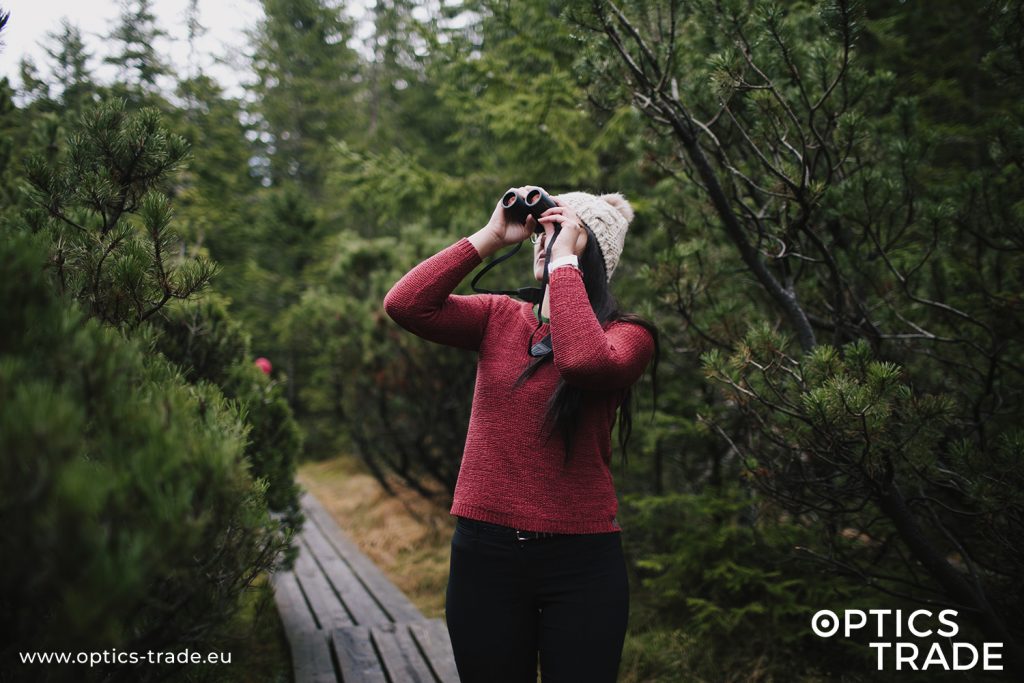
Those who carry pocket binoculars, mostly roof prism ones, prefer to put their devices in the pockets of their jackets when they are done observing. While not ideal, carrying the binoculars this way still makes them accessible for observing any action. For powerful binoculars with larger objective lenses, most people are comfortable carrying them in their backpacks because of their weight and size. This is especially true for bird watching fanatics who only stop at certain places to take out their devices, where there is a high probability of the presence of rare species of birds. Hikers often carry them this way in order to protect their expensive binoculars from accidental falls, which is probably in the rocky and unsmooth terrains of hiking trails.
Pocket Binoculars
No matter how powerful a binocular is, even the best of binoculars are useless if you cannot carry them around with you. Since rare birds can turn up anytime and anywhere, would it not be great if there were binoculars that were lightweight and so small that you could always keep them with you? A good all-rounder pocket binocular does not need to weigh a ton. Having pocket-sized binoculars would mean that you would never miss a bird sighting, whether it is a tufted duck from Europe wandering around the river you drive along every day or a blue warbler making its way into a parking lot’s shrubbery.
While the compactness and small weight are important factors, a set of binoculars that compromises the quality of optics and other essential aspects of the binoculars, such as compatible eye relief and effective focus mechanism, for a relative reduction in envelope size is not the perfect binocular either.
Watch our general features of POCKET BINOCULARS below
Objective Lens size of Pocket Binoculars
The most easily identifiable feature of a set of pocket binoculars is the size of its objective lenses, which is directly proportional to a binocular’s size. Binoculars with objective sizes equal to and smaller than 26 mm are included in the category of pocket binoculars. The objective size starts from 20 mm and go up to 26 mm for their largest models. Keeping this size below 26 mm is necessary to control the over-all dimension of the binoculars.
Magnification Power of Pocket Binoculars
The next important thing is the magnification power. Pocket-sized binoculars usually feature magnifications of 8x and 12x. While some models may come in even smaller magnifications, such as 6x or 7x, but these devices are much rare. The vast majority of pocket-sized binoculars feature either 8x or 12x magnification. While most people will consider it low compared to other mid-sized devices, the small reductions are a result of a small envelope size, which can only allow a small number of internal optical components, unlike their larger counterparts.
Prism type of Pocket Binoculars
Pocket size binoculars always come with the Schmidt-Pechan roof prism design. This type of prisms is known to occupy less space than Porro prisms and the Abbe – König roof prisms, which require a longer binocular construction. While they are known to produce less-bright images than binoculars with other prism types, most pocket-sized binoculars have highly reflective multi-layer prism coatings to minimize the loss of light during reflection in prisms.
Other pocket binos features
Another important feature of pocket-sized binoculars is the hinge type. Most binoculars in this size come with a double-hinged mechanism that helps to fold them into a compact size that is fit for most pockets. Some models may feature one-sided hinges and central hinges, but if someone is looking for extreme portability, double-hinge will be their best bet.
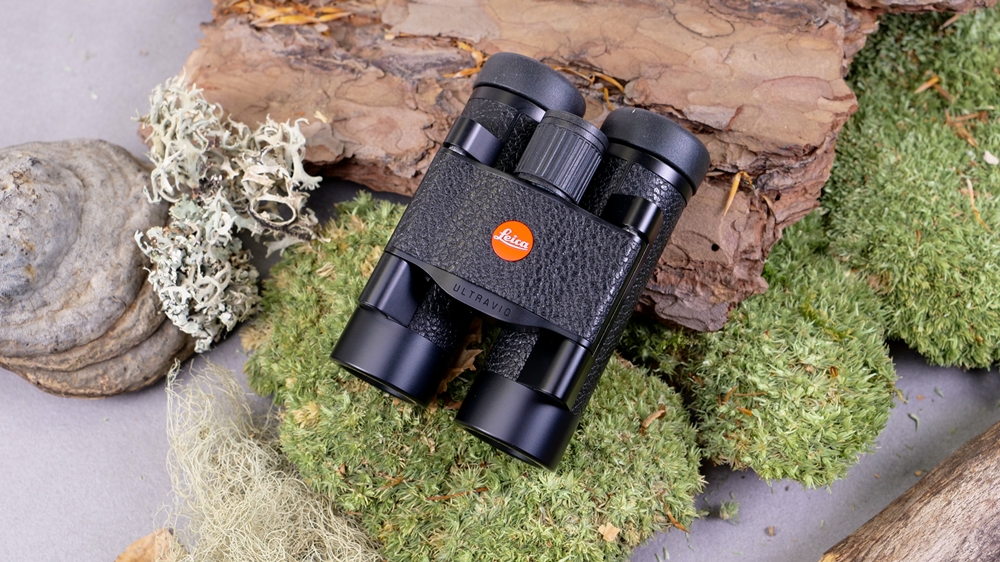
Pros
The most important benefit of having a pocket-sized binocular is that you can take it with you whenever and wherever you want. They are the smallest category of binoculars that are literally designed to be carried in pockets, so you do not miss any important action or a rare species of birds whether you are hiking around snow-covered mountains with family or having solitary strolls in the countryside. With a small envelop dimension, pocket-size binoculars are ultra-light-weight, so you would not feel uncomfortable while carrying one in your jacket pocket. This is what makes them practical for most situations.
Cons
Although they are the smallest species of binoculars available, only larger than theatre binoculars, pocket-sized binoculars do have some disadvantages to them. The first one is short eye relief in most pocket-size binoculars, which is due to the smaller overall size. Manufacturers achieve longer eye relief values by playing with the number of ocular or eyepiece lenses. Since there is less room to accommodate lenses, focusing mechanisms, and prisms, it is impossible to achieve longer eye relief in ultra-portable binoculars that are designed specifically to be carried in pockets. People with glasses will sometimes have problems using them.
Overall, pocket-sized binoculars are not considered comfortable for long term use by experts in the field. Less bright images and shorter eye reliefs are some of the reasons behind this perspective.
For further information about Pocket binoculars and their popular models, please visit Optics Trade.
Compact Binoculars
We just discussed Pocket binoculars, so what are compact binoculars? Binoculars with objective sizes larger than 28 mm and smaller than 36 mm fall into the category of compact binoculars. In a way, these binoculars bridge the gap between the ultra-portable pocket-sized binoculars and full-sized binoculars. Since they are somewhat larger, they pose fewer design and manufacturing challenges for optics manufacturers.
While they certainly cannot be carried in pockets, compact binoculars are small enough to be easily carried in backpacks or pouches when you are on the move, which makes them the perfect choice for longer tours. They are fairly lightweight too, especially compared to the binoculars with popular 42 mm and 50 mm objective lenses. The idea behind this category was to have binoculars that would solve the issues associated with pocket-sized binoculars, including loss of light and shorter eye reliefs so that they could be used for longer periods of time without eye strain.
Due to their size and inter-pupillary distance, compact binoculars make great gifts for children. Since they are naturally intuitive beings, compact-sized binoculars will help them observe their surroundings in a fun way and they can learn about things which they usually study in classrooms and never get the chance of observing in real life.
Watch our Compact Binoculars BUYING GUIDE below
Objective Lens size of Compact Binoculars
Compact binoculars come in objective sizes from 28 mm up to 36 mm. Since they are comparatively larger in size than pocket-sized binoculars, they produce relatively bright images in daylight conditions and their low-light performance is somewhat acceptable. As you go up with the objective size, the optical performance will further increase until you reach the 36 mm size. Their compact size and mid-sized objectives make them suitable for a variety of excursions and outdoor activities.
Magnification Power of Compact Binoculars
Magnification is the key in deciding the function of binoculars. Very high magnifications, such as 15x and upwards, are well suited for observing extremely distant objects, especially astronomical and planetary objects, while smaller magnifications are suitable for theatre glasses or sight-seeing tours. Compact binoculars usually feature magnifications that from 6x and go all the way up to 12x. Many would say they are at par with the pocket-sized binoculars, which is true, but they make it up with smaller close focus and longer eye relief values. Magnifications of 8x and 10x are fairly common in compact binoculars, while others are rarely seen.
Prism type of Compact Binoculars
Just like pocket-sized binoculars, compact binoculars also feature Schmidt-Pechan roof prisms for a substantial bargain in size and weight. These prisms are known for occupying less space than other roof prism configurations, but due to multiple in-prism reflections, roof prisms are known for loss of light, which is why they are diligently coated by several chemical layers to improve reflection and light transmittance. Some manufacturers offer Porro prisms in compact binoculars but those are rare.
Other compact binos features
Other important features that make compact binoculars a better choice over pocket-sized binoculars is individual focusing systems, longer eye reliefs, and close focus distances. Large objectives along with these features make these binoculars suitable for use for most users, especially eyeglasses wearers, in all kinds of terrains and excursions.

Pros
Compact binoculars provide a mix of an ideal size and weight along with improved optical performance. Since they do not weigh a ton, compact binoculars make excellent companions for multiple settings, from hiking, camping to bird watching and hunting.
Most people plan their hunting excursions early in the morning and usually carry a lot of equipment, such as hunting rifles and rifle scopes. Since these trips often last for an entire day, hunters prefer to carry small-sized binoculars, although they are not designed for hunting. Some compact binoculars with objective sizes 28 mm to 30 mm can even fit into bigger jacket pockets. A neck strap usually comes as part of the package, which enables avid hunters and hikers to keep using their beloved binoculars for longer time periods.
Cons
Despite having comparatively bigger objectives than pocket size binoculars, compact binoculars still suffer from dim images due to relatively smaller objective sizes of 28 mm to 36 mm and Schmidt-Pechan roof prism binoculars. While they produce bright images during the day, their low-light performance, especially during dawn and dusk is not the best.
Other drawbacks include a smaller field of view, which is mainly the result of smaller objective sizes, and the higher you go in magnification, the lower the field of view will become. In addition, their resistance to certain weather conditions is questionable, especially for affordable models. Also, some models in this category may have shorter eye relief which renders them unusable for eyeglass viewers.
Have trouble deciding which compact binoculars to buy?
Full size Binoculars
Binoculars with objective sizes of 42 mm are counted in this category of full-size binoculars. Presently, this size along with 10x magnification is the most popular binocular configuration in the world. Veterans in the optics field refer to this size as “all round binoculars”, and it is not without a reason. The 42 mm objectives along with magnification powers of 8x and 10x make these binoculars suitable for all sorts of activities.
Most activities require binoculars with high-light capturing capacity, especially if the objects come in between the sun and you. These may include hunting, bird watching, wildlife viewing, hiking, and boating. Binoculars with large objectives ensure images with sufficient brightness in most situations.

Objective Lens size of full size binoculars
These binoculars are known for their characteristic 42 mm objective sizes, which is suitable for all kinds of outdoor needs. The large objective lenses absorb enough light to produce brighter images, even in some low-light conditions. Although 42 mm is still not suitable for viewing objects at dawn and dusk times.
Larger objectives also contribute to a bigger exit pupil. In the case of 8×42 binoculars, the exit pupil is calculated to be 5.25 mm (42/8=5.25). To produce brighter images, the exit pupil must be equal or greater than the eye pupil of observers. The maximum diameter of the eye pupil of adults is 4 mm and while it may not completely utilize the larger exit pupil, these binoculars will ensure a comfortable viewing experience because of the flexibility of eye position.
Magnification Power of full size binoculars
These binoculars come with multiple magnification powers, such as 8×42, 10×42, and even higher, but 8x and 10x are the most commonly known configurations among birders and hunters. Although higher magnifications result in a lower field of view but this is not the case with full-sized binoculars. Even with 10x magnification, they provide a field of view of at least 110m on 1000m, which is suitable for most activities.
The 8×42 design offers steady images and is easier to maintain for stable images when compared to 10×42 binoculars. If you hike in uneven rocky hills or suffer from shaky hands, 8×42 is the right configuration. 10×42 binoculars will require a tripod to work effectively.
Watch our 8×42 Binoculars BUYING GUIDE below
Prisms types of full-size binoculars
Full-sized binoculars come in multiple prism types, with Abbe–Koenig prism and Schmidt-Pechan roof prisms configurations being the most popular among users because of their compactness and modern design. Notorious optics manufacturers, including STEINER, Nikon, Fujinon, and others, still offer Porro prism binoculars in this category, which are popular for even better optical performance and rough use.
Other full size binos features
Important features apart from objective size and magnification include a wider field of view of 150m on 1000m and 140m on 1000m for 8x and around 110m to 120 m on 1000m with the 10x models, which are suitable for hiking expeditions. In addition, full-sized binoculars have longer eye reliefs than their smaller counterparts which makes them the perfect choice for glasses wearers.
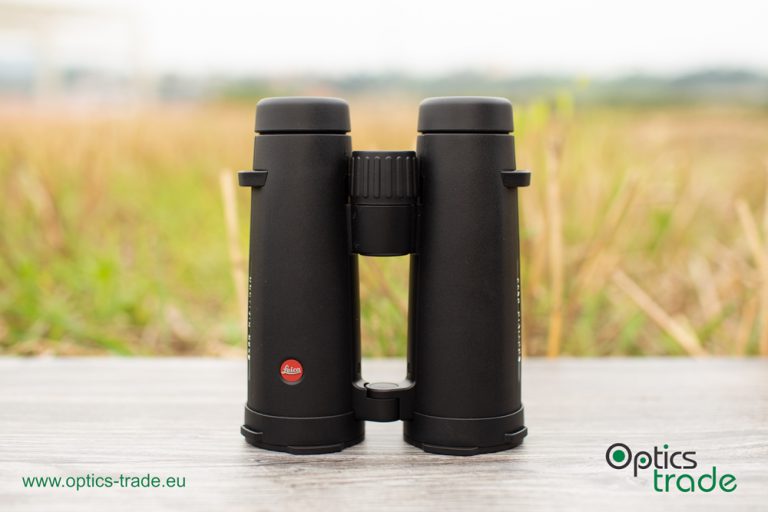
Pros
Full-sized binoculars offer a great mix of optical features with their larger objective lenses. Since they are considerably bigger in size than compact binoculars, there is room for larger prisms which ensure a longer path for light. Bigger binoculars also feature complex focusing mechanisms and close focus options, which are critical features if you are looking for comfortably adjustable binoculars for different types of objects, which include birds, wildlife, planets, stars, and several other interesting things.
Standard-sized binoculars also come with longer eye relief, since more lenses can be incorporated in the eyepiece compartment to prolong the relief required for comfortable viewing. A longer eye relief is suitable for eyeglass wearers, which represent a considerable portion of the population.
Cons
As we go upwards in the objective lens’s size department, a considerable increase in the envelope size of binoculars is inevitable. The increase is necessary to house larger 42 mm objective lenses, which work better with larger prisms and comparatively-sized eyepiece lenses. With an increase in the size of housing and optical components, a relative increase in weight is expected, which is the case with full-sized binoculars. These binoculars are impossible to carry in pockets, so they cannot be taken everywhere. Since they are specialized devices that are designed for a longer and more comfortable use, owners only bring them out while going out for full-day camping and hunting excursions
Have trouble deciding which full size binoculars to buy?
Big Binoculars for Hiking
Some people prefer to use larger binoculars for their hiking excursions because of their higher optical performance in all kinds of light and weather conditions. Binoculars with an objective lens size of 50 mm and 56 mm come in this category. These objective sizes are usually paired with magnification powers of 8x and 10x, which are suitable for most hiking camping needs.

Objective Lens size
Large binoculars come in two objective lens sizes, 50 mm and 56 mm. These large lenses ensure an optimal capture of light for all lighting conditions, especially in dense forests and rainy weather when the sun remains shy throughout the day. Think of it as exposure duration for cameras. If you increase the exposure time from milliseconds to a minute, for example, the resulting images will be super bright. Why is that? It is because the lens had enough time to capture a lot of light than its usual settings.
Similarly, a larger objective lens has the potential to absorb more light so that targeted objected appear brighter and their features are more clear.
Magnification Power
Binoculars in this category have similar magnification powers as that of binoculars with 42 mm. Hiking and camping trips seldom require higher magnifications than 10x since most outdoor activities like bird watching, hunting, and wildlife observation can be carried out with 8x and 10x, with 8x magnification power being the norm among masses.
Since it has been established that the higher the inverse relation of magnification with a field of view and steady imaging, most people stick with 8x. It provides a mix of good magnification, stability, and an optimal field of view of 150m on 1000m which are good characteristics in a hiking binocular.

Pros
Larger binoculars mean more room for larger optical components. For instance, larger prisms have big reflective surfaces that ensure effective light transmission to the ocular lenses. Similarly, 50 mm and 56 mm lenses are large enough to provide satisfying images with more detail than those can be expected from smaller objectives. This is especially important for birders and ornithologists, who spend hours and days looking for close-up views of rare species of birds. Bigger optical components ensure observers see ample detail even in deep shadowy environments. Some large binoculars even enable their observers to view the feathers of very distant birds, which is what most birders are looking for.
Cons
One problem that surrounds high-quality larger optics is the overall size and weight of the optical device. Most binoculars in this category weigh at least 1000g, which is disconcerting for some users. For continuous observation, a tripod stand is often recommended by optics experts since it would be difficult for hikers to hold them for longer periods of time. This adds one more piece of equipment to carry.
Some argue that hiking mostly takes place during the day, since walking in unfamiliar locations in dim light conditions is considered dangerous. Therefore, better low-light performance is usually not needed and an 8×42 or compact binoculars will do the job for most backpacking enthusiasts.
Binoculars for use in a large group
There are often times when you plan your hiking trips with a group of people, and they may include your relatives, friends or bird watching mates. It is uncommon for all people to have their own binoculars, therefore, some binoculars are designed to be used in a group by multiple eyes. People can easily circulate these devices around their mates without having to worry about focus adjustment and eye relief issues.

Central Focusing
These binoculars feature a central focusing mechanism instead of individual focus adjustment for each eye. How does it help? It is possible that some people in the groups might not be familiar with complex focusing systems in binoculars. Adjusting both barrels every time requires a lot of effort and some might find it uncomfortable. Central focusing enables users to rotate a central knob for a quick focus adjustment so that the binoculars are easier to share between multiple users.
Adjustable Eyepiece
These binoculars also feature adjustable eyepieces to accommodate multiple users. Not all have the same vision in both eyes and sometimes it is better to see with one eye than the other. To account for this, an adjustable dioptre feature is available on both eyepieces, however, it is usually found on roof prism binoculars. Although this feature suits people who may or may not wear eyeglasses, the great thing about it is that the need for glasses can be eliminated if they are only used for compensating the differences of vision between both eyes.
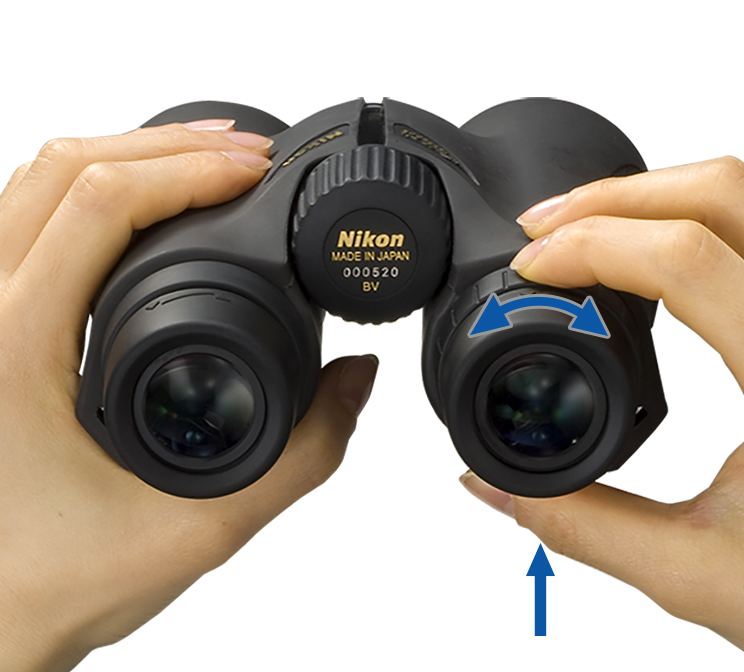
Importance of Good Ergonomics
Good ergonomics play an important part in interacting with any device, not just binoculars. An ergonomic design ensures comfortable use, even for longer periods of time. In the case of binoculars that might need to be used by multiple users, every optics manufacturer has incorporated a dynamic hinge mechanism in their binoculars that enable users to adjust the two optical barrels of binoculars for several inter-pupillary distances to accommodate both children and adults.
Another important thing to consider is handling. Children have smaller hands compared to adults and some adults might have larger hands than others. An ergonomic design also takes this into account, so that everyone can comfortably handle the binoculars without unwanted fatigue.
Which are the best binoculars for hiking?
For hiking and camping activities, compact binoculars are ideal. They come in multiple objective sizes, from 28 mm to 36 mm, which are excellent for most people. However, if portability is what you prefer, pocket-size binoculars provide a lightweight chassis with smaller envelope dimensions, and can easily be carried in jacket pockets. Binoculars with objective sizes of less than 26 mm are included in this category.
Full-size binoculars with standard 42 mm objective sizes are popular among regular hikers. They are known for better optical performance, even in low light, than their smaller counterparts. However, they are large and usually weigh more than compact binoculars, therefore carrying them for longer periods can be an uncomfortable experience for some users. Similarly, big binoculars may provide high optical performance in low-light situations, but since most hiking journeys take place during the day, hauling these large binoculars makes no sense.
Regardless of what size fits your requirement, it is recommended to only opt for binoculars with quality optics and robust housing construction for indefinite tension-free use.
